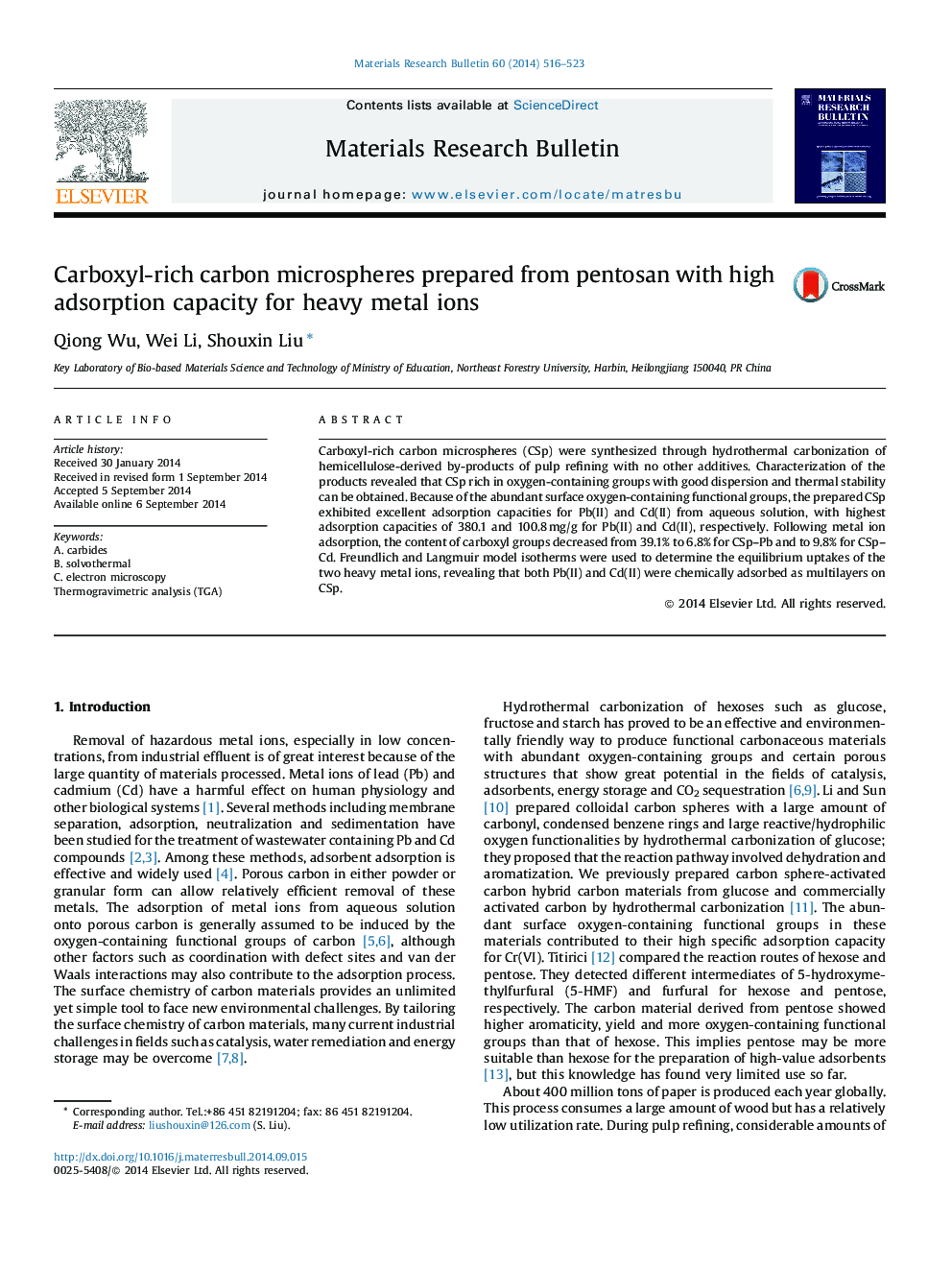| Article ID | Journal | Published Year | Pages | File Type |
|---|---|---|---|---|
| 1487871 | Materials Research Bulletin | 2014 | 8 Pages |
•Pentosan, a by-product of pulp refining, is used to produce carbon microspheres.•Carboxyl-rich carbon spheres are prepared by one-pot hydrothermal carbonization.•The carbon spheres have a relatively high adsorption capacity for Pb(II) and Cd(II) compared to the traditional activated carbon.
Carboxyl-rich carbon microspheres (CSp) were synthesized through hydrothermal carbonization of hemicellulose-derived by-products of pulp refining with no other additives. Characterization of the products revealed that CSp rich in oxygen-containing groups with good dispersion and thermal stability can be obtained. Because of the abundant surface oxygen-containing functional groups, the prepared CSp exhibited excellent adsorption capacities for Pb(II) and Cd(II) from aqueous solution, with highest adsorption capacities of 380.1 and 100.8 mg/g for Pb(II) and Cd(II), respectively. Following metal ion adsorption, the content of carboxyl groups decreased from 39.1% to 6.8% for CSp–Pb and to 9.8% for CSp–Cd. Freundlich and Langmuir model isotherms were used to determine the equilibrium uptakes of the two heavy metal ions, revealing that both Pb(II) and Cd(II) were chemically adsorbed as multilayers on CSp.
Graphical abstractCarboxyl-rich carbon microspheres (CSp) were synthesized through hydrothermal carbonization of hemicellulose-derived by-products of pulp refining. The abundant acid carboxyl groups exhibit negative net surface charge at aqueous solution, which can contributed to the cationic species adsorption of Pb(II) and Cd(II) by complexation.Figure optionsDownload full-size imageDownload as PowerPoint slide
